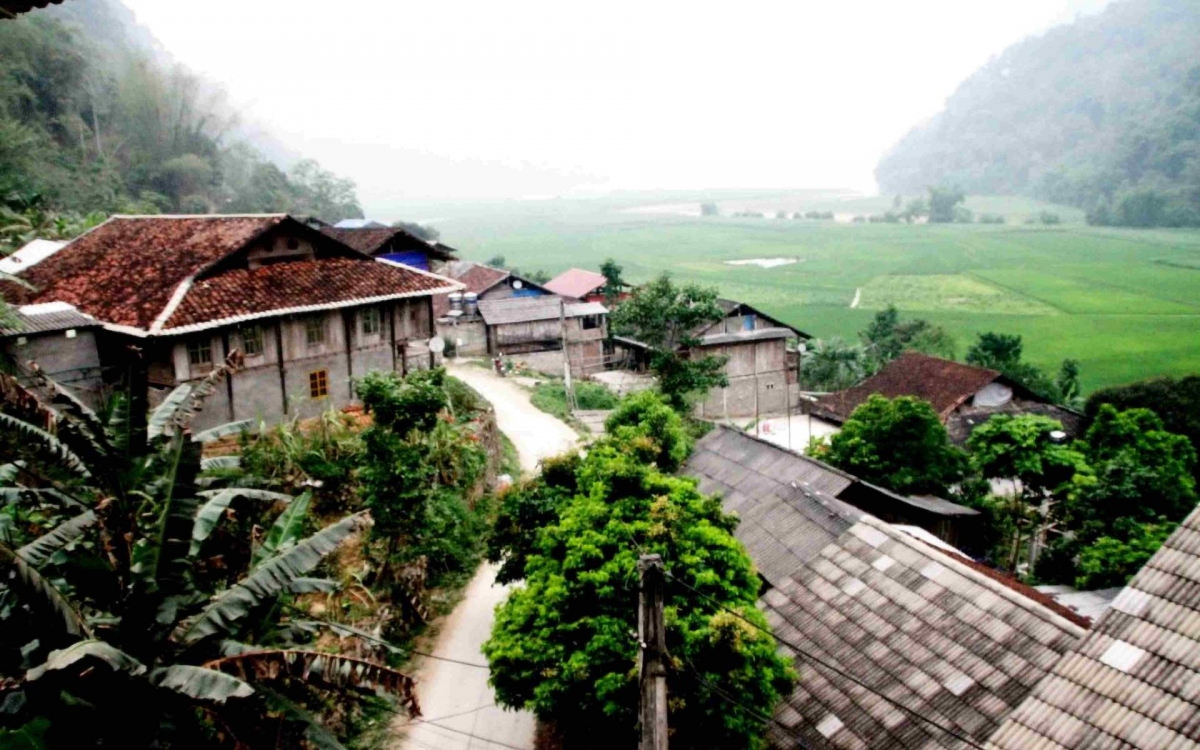Tourists can spend the entire day exploring the beautiful lake and even opt to stay overnight, immersing themselves in nature.
The lake is surrounded by green islets where tourists can be one with nature and enjoy some fantastic photo sessions. A boat trip around the lake is a must, and so is a stay in Pac Ngoi Village, home to 100 households of the Tay ethnic people.
The path leading to Pac Ngoi is large enough to accommodate a seven-seat car. However, as the village is by the Ba Be Lake, travelers can walk around and enjoy the charming scenery along the way.
There is also a wharf in Pac Ngoi Village, where tourists travel around the lake by boat. At the wharf, street vendors sell wild herbs and fresh fish caught from the lake.
During the boat trip, they witness picturesque sceneries featuring huge age-old trees, wild white flowers blooming and yellow leaves covering the lakeside. The boat takes tourists to the An Ma Temple on a small islet. The temple worships loyal leaders of the Mac Dynasty who ruled northern Vietnam’s Tonkin area from 1527 to 1592.
The next stop is the Ba Goa (widow) islet, also known as the Po Gia Mai Islet. It was named after a widow who tried to save all the people on the islet from the high tide. The 100-square-meter islet is home to giant old trees and big rocks.

Travelers can then return to Pac Ngoi Village to learn more about the culture of the Tay ethnic people. The locals there also provide homestay services that allow guests to stay in stilt houses, well equipped with an Internet connection and much more. A meal featuring the specialties of the Tay ethnic people is also on offer, apart from traditional dance performances.
At night in Pac Ngoi, guests can hear the sounds of insects, feel the soft breeze flowing and take in the sweet scent of herbs and flowers, which are hard to find in bustling cities, and the perfect recipe for a good night’s sleep.
Pac Ngoi, a cultural village in Bac Kan famous for homestay tourism
Pac Ngoi Village in Nam Mau Commune, Bac Kan province, is one of just a few places where the traditional customs of the Tay minority ethnic group are still practiced.








